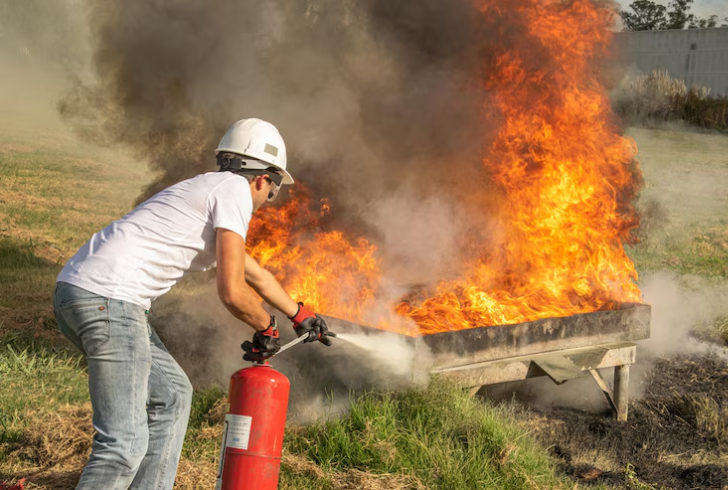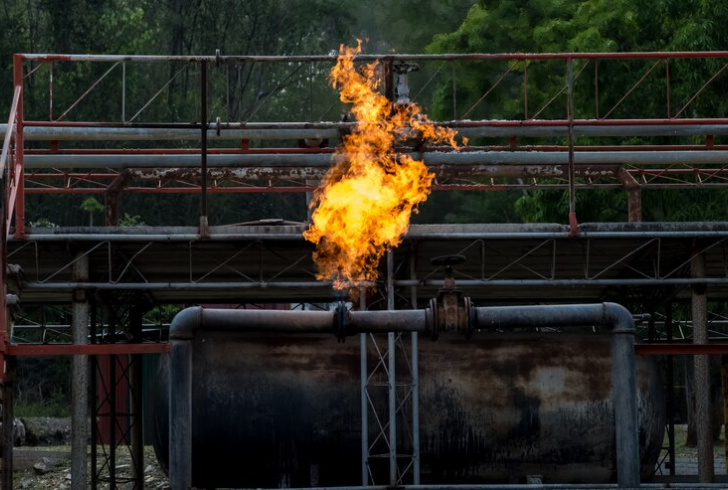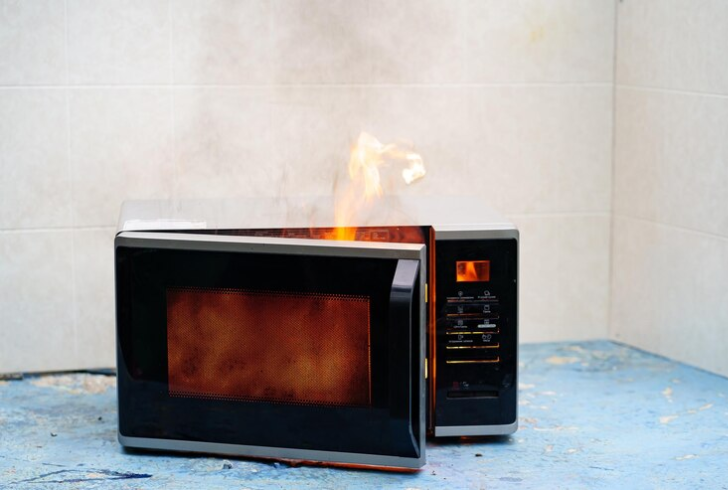Knowing how to react in a fire emergency is crucial. Fires can erupt from a spark to an inferno in seconds, emphasizing the importance of acting swiftly. Familiarizing yourself with different fire types and how to extinguish them, including how to extinguish gas fire, empowers you to protect your loved ones if a fire breaks out. Remember, the following scenarios provide tips for extinguishing a fire yourself. If the situation worsens or spreads rapidly, call your local fire department or dial 911 immediately.
Understanding Different Fire Types
Fires are categorized based on the fuel source. Here's a breakdown of common household fires and how to extinguish them:
1. Wood Burning Fires (Class A Fires)

Image by ernestovdp on freepik | ood-burning fires, whether from fireplaces or fire pits, are categorized as Class A fires.
Wood-burning fires, often originating from fireplaces or fire pits, are classified as Class A fires. These fires involve flammable solid materials like wood, paper, trash, fabric, and plastics.
How to Extinguish a Wood-Burning Fireplace Fire:
- Do: Use a fireplace poker to spread the embers and wood apart. This cools the fire and reduces the flames.
- Do: Once the embers cool, use ash from the embers to smother the flames.
- Do: After extinguishing the fire, sprinkle a layer of baking soda over the ash to eliminate any remaining embers. This cuts off their oxygen supply.
Don't: Remove burning logs from the fireplace. Doing so increases the risk of spreading the fire as you carry them.
- Don't: Douse the flames with water in a fireplace or enclosed space unless absolutely necessary. Water creates excessive smoke and can cause steam burns. Additionally, it can damage your fireplace due to rapid temperature changes.
How to Extinguish an Outdoor Fire Pit Fire:
- Extinguish the fire with water. Unlike fireplaces, outdoor fire pits are typically in open spaces, allowing smoke and steam to dissipate freely when extinguished.
- Spread the wood and embers to create ash, similar to extinguishing a fireplace fire.
- Smother the embers with a thin layer of sand. This cuts off their oxygen supply. Avoid using excessive sand, as embers might stay lit underneath, posing a fire hazard if exposed by wind.
- If the fire gets out of control, use a Class A fire extinguisher. If the above methods fail and the fire appears uncontrollable or at risk of spreading, call 911 for assistance.
2. Gas Fires (Class B Fires)

Image by voraorn on freepik | Flames fueled by natural gas, kerosene, propane, or gasoline are classified as Class B fires.
Fires caused by natural gas, kerosene, propane, or gasoline are classified as Class B fires. These involve flammable liquids and are best extinguished by smothering. Never use water to extinguish a gas fire. Water will worsen the situation. Instead, use a Class B fire extinguisher specifically designed for gas fires.
For a fire caused by a leaking natural gas appliance:
- Once the fire is under control, shut off the gas supply to the appliance.
- Notify your utility company.
- Do not turn the appliance back on until a professional has inspected and addressed the leak.
How to Extinguish Other Common Household Fires
3. Electrical Fires (Class C Fires)
Electrical fires can originate from faulty wiring, malfunctioning appliances, or frayed electrical cords. Here's how to handle an electrical fire:
- If possible, unplug the appliance. This minimizes the risk of the fire spreading and prevents the appliance from posing a further threat.
- Use a Class C fire extinguisher. Different fire extinguishers are designed for specific fire types. A Class C fire extinguisher is suitable for electrical fires originating from outlets or electrical components.
- For small electrical fires, smother the flames with baking soda. This cuts off the fire's oxygen supply, potentially extinguishing it. However, if the fire grows out of control, call 911 immediately.
4. Appliance Fires
Kitchen appliances like ovens, stoves, and microwaves can also cause fires due to the high temperatures they reach. Here's how to tackle these fires:

Image by mashasay on freepik | Kitchen appliances like ovens, stoves, and microwaves can ignite fires due to their high temperatures.
How to Extinguish an Oven Fire:
- Leave the oven door closed. This prevents oxygen from fueling the flames and stops them from reaching other areas of your kitchen.
- Turn off the oven. This prevents the fire from spreading to the outlet and potentially throughout your home.
- Do not use water on the flames. If the oven is plugged in, using water risks electrocution.
- Most oven fires self-extinguish if you leave the door closed. If the fire persists, use a Class C fire extinguisher to smother it.
How to Extinguish a Stove Fire:
- Turn off all burners. A lit burner will only fuel the fire, making it harder to extinguish.
- Move flammable objects away from the stovetop and unplug nearby appliances. This creates a safety zone and minimizes the risk of the fire spreading.
- Similar to an oven do not use water to douse the flames.** Electricity conducts through water and could electrocute you. Use a Class C fire extinguisher if the flames don't disappear independently.
How to Extinguish a Microwave Fire:
- Unplug the appliance or turn off the kitchen's circuit breaker.
- Extinguishing a microwave fire is similar to an oven or stove fire. The key is to ensure the appliance is unplugged and there are no nearby objects that can catch fire.
- Using a Class C fire extinguisher is recommended to extinguish the fire at its source.
5. Grease Fires (Class K Fires)
Cooking fires are the leading cause of home fire injuries. Most of these fires start when oil gets too hot, boils over, and ignites. These are known as grease fires, or Class K fires.
How to Extinguish a Grease Fire:
- Smother the fire immediately. Use a lid or cookie sheet to cover the pan. Leave the cover on until the flames are extinguished, and the metal is cool to the touch. This cuts off the oxygen supply and smothers the fire.
- Turn off the heat source. Shutting off the stove or burners will further prevent the grease or oil from heating. While this helps, avoid removing the pan from the stovetop. You risk dropping the pan or causing burning grease to splatter, increasing the danger.
- Do not use water on the fire. Water can cause the grease to splatter and spread the flames. This happens because water vaporizes in the intense heat, causing the grease to jump and spread as the water vapor escapes.
- Using a Class K fire extinguisher is a last resort. Grease fires can be challenging to extinguish without proper equipment. If you don't have a Class K fire extinguisher, call 911 immediately.
What to Do If You Can't Extinguish a Fire
If a fire becomes uncontrollable, evacuate your house immediately. Close the door behind you as you leave to help contain the flames. Once you're safe, call 911 and wait for help to arrive. Do not re-enter your home until a firefighter or other professional deems it safe.
Fires spread rapidly. Delaying action can lead to significant structural damage to your home. Additionally, smoke inhalation and soot damage pose ongoing health risks and property damage concerns.
Recovering from Fire Damage
Fire damage can devastate your home and cherished possessions. Dealing with such a loss can be overwhelming. Restoration experts specialize in helping homeowners recover from fire damage. They will work to restore your home and support you through the process.
Remember, the best course of action for any fire is prevention. Invest in smoke detectors and have them checked regularly. Regularly inspect and maintain potential fire hazards like electrical wiring and appliances. By being prepared and knowing how to react in a fire emergency, you can protect yourself, your loved ones, and your home.

